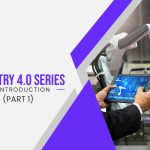State-Of-The-Art Pharma Traceability Solutions
The Drug Quality and Security Act (DQSA) was passed by the US Congress in November 2013. Title II of this act outlines the Drug Supply Chain Security Act (DSCSA) which outlines the policy to create an electronic, interoperable system to identify and track specific prescription medications as they are supplied in the US. This is being hailed as Pharma Traceability.
Indian pharmaceutical companies have long established themselves as the frontrunners in global pharmaceutical operations and enjoy global prominence in the production and supply of generic drugs to the largest extent. India’s pharma industry produces and supplies over half the global demand for vaccines and almost 25% demand of medicines for the United States.
Despite the vital role that the Indian pharmaceutical sector plays in global healthcare, it has been repeatedly afflicted by claims of counterfeit and subpar supply. According to a research conducted by one of India’s trade associations in 2014, around 25% of medications in the domestic supply chain are counterfeit, fake, or substandard. According to a research published in April 2019 by the US Trade Representative’s office, 20% of pharmaceutical items in India are spurious.
Role Of Pharma Traceability In Indian Pharma Industry
Pharma Traceability’s primary objective is to trace the movement of prescription medications and medical equipment throughout the supply chain. It allows you to track a product’s history of transfers and locations backwards from the point of manufacturing. You may also look forward to determine the product’s anticipated path to the point of care.
Though the rules were established in 2013, unit-level traceability is not likely to be implemented until November 2023. And both the regulator and the Indian pharmaceutical sector are looking at new technology and processes that will help them execute the policy smoothly and give a system for efficiently managing their supply chains.
Anti-counterfeiting efforts can be aided by a robust track-and-trace system that spans supply chain trade partners. This necessitates pharmaceutical businesses adopting global traceability standards at various stages of product packaging.
Future Algos, a provider of ‘track and trace’ solutions , comes into play here. While you’re seeking for a pharma traceability solution to fulfill drug regulatory compliance requirements, our solutions also allow you to monitor quality control and process improvement. Our traceability software allows you to monitor every product you make in real time, allowing you to regulate product quality and secure precise data at all times.
Our specialist pharma traceability solutions allow organizations to track both internal and external movement of the products. Whether you are looking for data pertaining to the product’s life cycle in the industry supply chain till it reaches the end user, or you need information of the product within the production unit, our traceability solution can give it to you in real time.
The Process Of Pharma Traceability

The goal of a ‘track and trace‘ system is to have comprehensive information on the pharmaceuticals that are manufactured, transported, and distributed across the globe. At each stage within the supply chain, we should be able to determine the specific location of the drug. Pharma traceability may be thought of as a log of the drug’s life from inception through consumption.
Though the rules were established in 2013, unit-level traceability is not likely to be implemented until November 2023. And both the regulator and the Indian pharmaceutical sector are looking at new technology and processes that will help them execute the policy smoothly and give a system for efficiently managing their supply chains.
Pharma traceability involves a few basic steps that are implemented in different ways in different countries.
1. Serialization
Serialization typically adds an additional step to the traditional product identification procedure that is currently in place across the world. Pharma products are already marked with batch-level identifying data, which allows for unique product identification. Serialization takes pharma traceability a step further by assigning a unique serial number to each level of packaging.
Serialization’s objective is to provide a unique identity for items produced by the producer or re-packager at a certain level of granularity in packaging.
2. Track and Trace
Track and Trace, or pharma traceability in this context, is the ability to know where the drug has been and is at any given point of time. The purpose of developing a track and trace method is to comprehend the product’s ownership changes. It also permits tracing a drug’s movement back to the producer and, in certain situations, tracing a product’s movement even if it hasn’t changed hands.
3. Verification
Verification is the key step in ensuring the veracity of information that is accumulated through serialization and track & trace capabilities of the process. In case of change of ownership or saleable return of a product, it is important to verify the product movement and other transactions relating to the product. This is vital to weed out spurious drugs and fake products entering the supply chain. Though there are no set guidelines on implementing the verification aspect in the pharma traceability process, each organization has its own process to ensure that this step is included in the final unit-level pharma traceability system.
Pharma traceability doesn’t end with serialization. It extends to data analytics of the information collected during the movement of the drug through the entire supply chain. Applying the outcomes of the data analysis towards enhancement of process efficiency is when the true value of pharma traceability is achieved.
Get in touch with Future Algos’ Traceability Solutions team to understand how we can work together to create an expert pharma traceability solution for your organizational needs.



